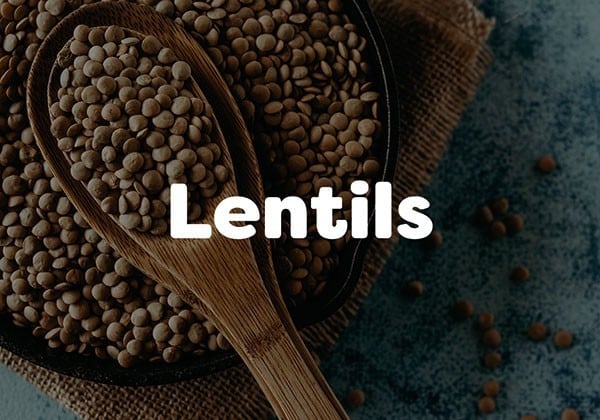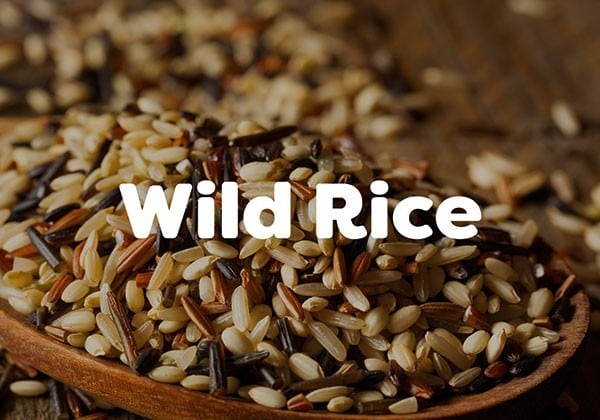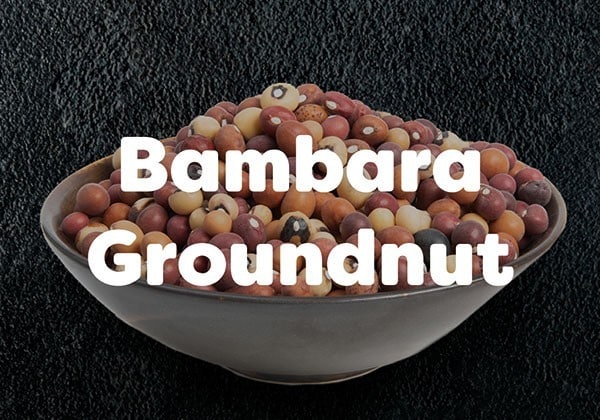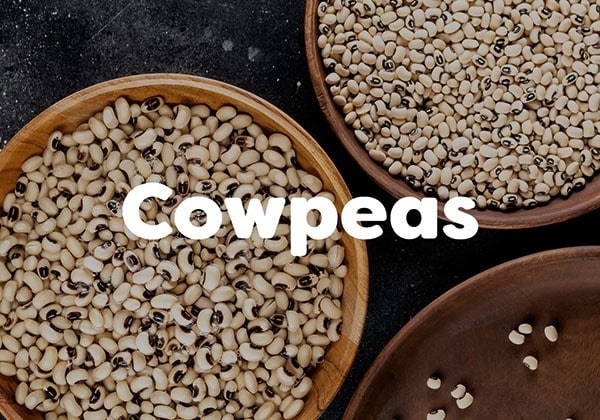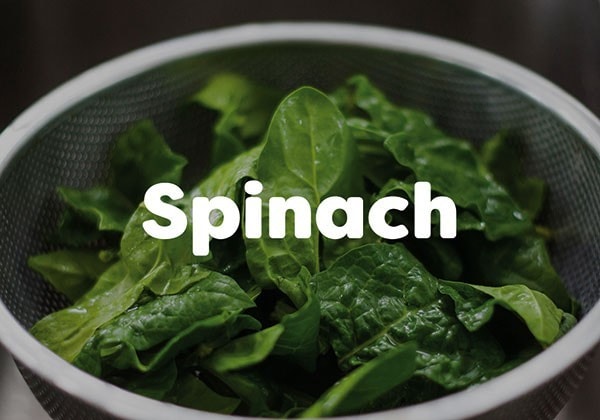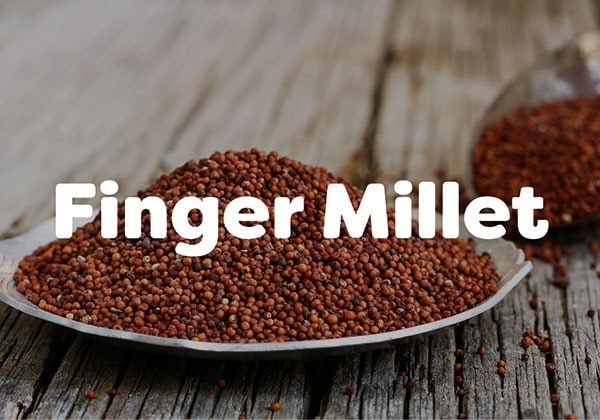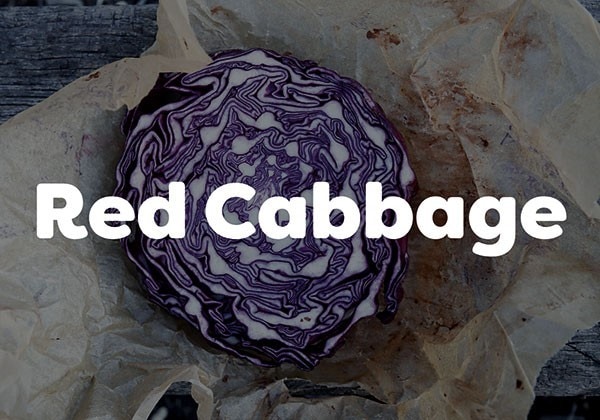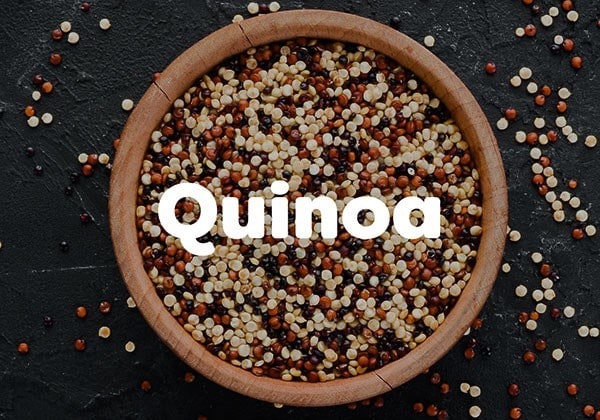Changed terms & conditions
Chef Rewards (the “Scheme”) is operated by Unilever South Africa (Pty) Ltd trading as Unilever Foodsolutions, 15 Nollsworth Crescent, La Lucia Ridge Office Park, La Lucia, 4051, Durban, South Africa (the "Promoter").
ELIGIBILITY AND PARTICIPATING PRODUCTS
The Scheme is open to bona fide South African catering and food service establishments and their employees aged 18 years or over, except employees of the Promoter, their families, agencies, or anyone professionally connected with the Scheme.
Employees must get the business owner’s permission to enter and evidence of such permission may be required.
A registered Chef Rewards account is allocated to participating trading entity, not to named individuals.
Points (‘Chef Rewards Points’) will be allocated per account, based on purchases of participating products on the Scheme.
Internet access is required.
Purchase is necessary.
The Scheme is available in relation to all products listed on www.unileverfoodsolutions.co.za.
The Promoter may run events where:
Participating Products can be added or removed temporarily;
Members are able to increase or multiply the number of Chef Rewards Points they have in their accounts when they purchase the Participating Products during the period and in the circumstances specified;
Members can redeem selected merchandise online at a reduced Chef Rewards Point redemption rate from time to time during the period.
The Promoter shall give reasonable notice of any additions or changes to the Participating Products or any events as described before. Additional terms may apply.
The following wholesalers (the ‘Participating Wholesalers’) are participating in the Scheme: Bidvest Food Service KZN, Bidvest Food Service Gauteng, Bidvest food Services Western Cape, Cater 2 U KZN, Checkers Food Service Gauteng, Checkers Food Services Western Cape.T
The Promoter reserves the right to add or remove Participating Wholesalers by giving reasonable notice.
If a Participating Wholesaler decides to leave the Scheme Members who purchase from the Participating Wholesaler will have the option to add an account from a different Participating Wholesalers to their Chef Rewards Account.
Chef Rewards Points accrued at a Participating Wholesaler leaving the Scheme will remain valid.
REGISTRATION
To register on the Scheme, visit www.unileverfoodsolutions.com. Complete the registration process by entering your name, email address, wholesaler account information and chosen password and all other required fields. Responsibility is not accepted for any inaccuracies in the information supplied by the participant when providing their details.
By registering as a member of Chef Rewards (“Member”) and/or using the Scheme, Members agree to provide up-to-date and accurate information to the Promoter for the purposes of administering the Scheme at all times.
Attention is drawn to Unilever’s Privacy Policy, accessible on this site. Participants information will be shared with the Participating Wholesalers in so far as is necessary to place the orders and information thus shared will fall within the Participating Wholesalers privacy policies. The Promotor will not be liable for any breach of Members privacy rights by the Participating Wholesalers.
Each Member will have an account (the ‘Chef Rewards Account’) where Chef Rewards Points will be accrued. There will be 1 Chef Reward Account per establishment allocated but Members can request Promoter to create 1 account for multiple establishments if they are owned by the same legal entity by contacting Promoter on Customer Care on 0860 31 41 51 .
Only registered users may order through the Website.
To register as a user, Members must provide a unique username and password and provide certain information and personal details. Members will need to use the unique username and password to access the Website.
Members agree and warrant that their username and password will:
be used for personal use only; and
not be disclosed to any third party.
For security purposes Members agree to enter the correct username and password whenever ordering through the website, failing which they will be denied access.
Members agree that, once the correct username and password relating to the account have been entered, irrespective of whether the use of the username and password is unauthorised or fraudulent, they will be liable for payment of such order, save where the order is cancelled in accordance with the terms and conditions of the third party.
Members agree to notify the Promotor immediately upon becoming aware of or reasonably suspecting any unauthorised access to or use of the username and password and to take steps to mitigate any resultant loss or harm.
POINTS ALLOCATION
Chef Reward Points will be allocated for all purchases made of the Participating Products on the Scheme through Participating Wholesalers.
Chef Rewards Points will be awarded on the first Friday of every month and will cover sales orders placed the previous month.
Eligible customers start collecting Chef Rewards Points upon registration of their account.
Members can nominate up to three accounts from Participating Wholesalers per Chef Rewards Account to collect points against purchases. The participating wholesaler account numbers will be consolidated into one Chef Rewards Account and all Chef Rewards Points earned will accrue under one Chef Rewards Account.
If at any given time, the Member chooses to remove or replace a nominated participating wholesaler account number from the Chef Rewards Account, the removed account will no longer be eligible to accrue Chef Rewards Points.
REDEMPTION
In order to redeem Chef Rewards Points, you must be a member of the Chef Rewards Scheme. Membership of the Scheme is free.
There are various types of rewards (‘Chef Rewards’) that can be redeemed/will be redeemable under the Scheme on UFS.com:
Technology
Kitchen Smalls
Gluten free tools
Vouchers
Confectionery
Charitable donations
These Chef Rewards can be changed without notice.
A full list of the Chef Rewards offered and corresponding Chef Rewards Points values can be found on the Website www.unileverfoodsolutions.co.za.
Following registration, Members will be able to build their Chef Rewards Points to redeem against rewards provided in the Chef Rewards E-Shop. Members can select rewards as per their choice corresponding with the number of Chef Rewards Points necessary to redeem the Chef Reward. The balance of Chef Rewards Points are available to Members when they log onto the Website. Members may also receive emails confirming their Chef Rewards Points balance.
Chef Rewards Points have no cash value and cannot be exchanged for cash. The selling or exchange of Chef Rewards Points is strictly forbidden and will result in Members being removed from the Scheme immediately.
A Member cannot make part payment towards rewards on the Scheme and no currency, other than Chef Rewards Points, will be accepted.
Chef Rewards Points will be subtracted from a Member's account immediately upon a Member choosing to redeem against a Chef Reward.
If you have problems redeeming your Chef Rewards Points please contact Customer Care on 0330 331 0790.
REWARDS
The Promoter reserves the right at any time to add, modify or limit the rewards offered on the Scheme if circumstances beyond the Promoter’s control make this necessary.
The Promoter reserves the right at any time providing at least 20 days notice is given, to modify or limit the Chef Rewards offered. Such notice will be given by way of communication on the website and Members will be presumed to have consulted the website regularly. The Promotor may add new rewards at any time.
All Chef Rewards are subject to the terms and conditions of the third party supplier of the particular reward.
The Promoter reserves the right to offer an alternative reward of equal or greater value if circumstances beyond the Promoter’s control make this necessary.
The Promoter makes no warranty whatsoever in respect of the Chef Rewards. Any manufacturer or third party supplier warranties will transfer to Members upon delivery of the Chef Reward.
Any instances of rewards damaged in transit must be reported via the help section of the Chef Rewards website. A replacement reward may be issued subject to inspection of the returned item. Members’ statutory rights are not affected.
Any reward faults post-delivery and which occur within the manufacturer's or third party supplier's warranty period must be reported via the help section of the Chef Rewards website, and will be addressed by the manufacturer or third party supplier on a case by case basis.
Chef Rewards can only be redeemed against the equivalent number of Chef Rewards Points indicated on the Website.
Once ordered, Members will receive an email confirmation of the Chef Reward they have ordered and their new Chef Rewards Points balance to the email address they have provided.
Rewards will be delivered within 28 days from confirmation.
LIMITATIONS OF LIABILITY
Other than for death or personal injury arising from negligence of the Promoter or for fraudulent misrepresentation by the Promoter, and so far as is permitted by law, the Promoter hereby excludes all liability for any loss, damage, cost and expense, whether direct or indirect, howsoever caused in connection with the Scheme or any aspect of a Chef Reward. In no circumstances shall the Promoter be liable for any loss or profits, depletion of goodwill, loss of business or management time.
Neither the Promoter, its employees nor its agents or subcontractors assume any responsibility or liability for:
Any incorrect or inaccurate Chef Rewards Points entry, or for any faulty or failed electronic data transmissions.
Any unauthorized access to, or alteration of Chef Rewards Points at any point in the operation of this Scheme.
Any system failures on the Website.
Any failure to fulfil obligations of any third parties involved in this Scheme, although we will endeavour to minimise the effect to the participant of such failure.
Communications line failure, regardless of cause, with regard to any equipment, systems, networks, lines, satellites, servers, computers or providers utilized in any aspect of this Scheme.
Inaccessibility or unavailability of the internet or the Website or any combination thereof through dial up, broadband or mobile internet.
GENERAL
The sale or barter of Chef Reward Points is strictly prohibited.
Membership will terminate immediately in the event of a Member's death or winding up. Member accounts and Chef Rewards Points balance are not transferable upon death upon winding up or otherwise by operation of law.
Members can choose to leave the Scheme at any time. By leaving the Scheme members forfeit the right to any Chef Rewards Points already accrued or issued. The Member's account will be closed within 30 days. Further communication between the Promoter and the Member will also end.
The Promoter may from time to time adjust Members' accounts upwards or downwards in respect of accounting errors or suspected fraud, for which the Promoter has full authority in its absolute and sole discretion.
Except as provided for in these terms, only one Chef Rewards account is permitted per trading entity and accounts created using automated devices or processes are not allowed. The Promoter reserves the right, in its absolute and sole discretion, to remove a Member from the Scheme where multiple accounts are suspected, at which time any accrued Chef Rewards Points balance will be null and void.
The Promoter reserves the right, in its absolute and sole discretion, to remove a Member from the Scheme where it is felt that the Member concerned could be misusing the Scheme and/or the Website in breach of these Terms and Conditions. Any Chef Rewards Points accrued or issued at the date of removal will be forfeited.
Members are responsible for ensuring that their login details remain confidential to them so as to protect against any unauthorized use of their account. The Promoter will not be liable for any loss, damage or consequential damage of any nature in contract, tort (including negligence) or otherwise caused by such unauthorized use of a Member's account (to the extent permissible by law).
The Promoter reserves the right at its absolute and sole discretion to withhold the Chef Rewards redeemed by any Member or individual found to be tampering with the redemption process or the operation of the Scheme and/or the Website.
The Promoter makes no warranty in relation to the Chef Rewards supplied by the Chef Rewards Supplier concerned. The Promoter is not responsible for any guarantees, warranties and/or representations (if any) made by a Chef Rewards supplier.
A Member shall be responsible for any tax implications or payment of tax that may arise as a result of joining the Scheme.
The Promotor does not accept responsibility for Chef Rewards Points lost, damaged or delayed as a result of any network, computer hardware or software failure of any kind.
The Promoter's decision regarding all matters relating to the Scheme is final.
The Promoter reserves the right to amend these Terms and Conditions at any time upon reasonable notice given to its Members if circumstances beyond the Promoter’s control make this necessary or unavoidable.
The Promoter reserves the right to alter, withdraw, terminate or cancel the Scheme at any time upon reasonable notice given to its Members.
In the event of withdrawal, termination or cancellation, a Member will have 30 days from the notice date of the termination to redeem any Chef Rewards Points that were held in their accounts prior to the notice date of the termination in accordance with these Terms and Conditions (the “Termination Period”). Unless specified otherwise, no additional Chef Rewards Points will be able to be accrued during the Termination Period.
The Promoter will make every effort to communicate to all Members the Termination Period, however the Promoter will not be held responsible for failing to notify any individual Member regardless of the reason.
Where the Terms and Conditions of the Scheme are amended, any amendments shall be effective upon posting the modified Terms and Conditions at www.unileverfoodsolutions.co.za and notifying Members via the Website or via email. Members will be asked to agree to the updated Terms and Conditions in order to remain a Member of the Scheme.
Amendments will be explained at the top of these Terms and Conditions and the most current version shall prevail.
By registering to become a Member and/or using the Scheme, all participants will be deemed to have accepted and be bound by these Terms and Conditions and consent to the transfer of their personal data to the Data Controller, for the purposes of the administration of this Scheme, including latest offers available under the Scheme and any other purposes to which the entrant has consented. All registration instructions form part of the Scheme Terms and Conditions. The Promoter will always communicate responsibly under the terms of relevant legislation and other self-regulatory restrictions.
The Promoter shall not be liable for any loss, damage or consequential damage of any nature in contract, tort (including negligence) caused by acceptance of the terms and conditions or in connection with the Scheme (to the extent permissible by law).
In the event that any provision of these terms and conditions is held to be unlawful, invalid, void or otherwise unenforceable, it shall be severed from the remaining provisions of these terms and conditions which shall continue in full force and effect.
These Terms and Conditions and any issues or disputes which may arise out of or in connection with these Terms and Conditions (whether such disputes or issues are contractual or non-contractual in nature, such as claims in tort, for breach of statute or regulation or otherwise) will be governed by and construed in accordance with South Africa law. Participants hereby irrevocably submit to the exclusive jurisdiction of South African courts to settle any such dispute or issues.
Promoter & Data Controller: Unilever South Africa trading as Unilever Foodsolutions South Africa, 15 Nollsworth Crescent, La Lucia Ridge Office Park, La Luica, 4051, Durban, South Africa.
Our details are:
Unilever South Africa (Pty) Ltd
15 Nollsworth Crescent
Nollsworth Park
La Lucia Ridge, 4051
Reg. no. 1939/012365/07
Terms Of Use
This website is provided for your information and entertainment, and we hope you enjoy using it. Please browse the website and make use of its various features, but please be aware that your use of the website is subject to the following Terms of Use (defined below). If you do not agree to these Terms of Use, please do not use this website.
This site is a Unilever site that helps you place orders with third party suppliers. You will be rewarded with loyalty incentives for using this site.
We will need to give your personal information to the supplier to place the order. By using this site, you consent to us sharing your personal information with the supplier.
It is important that you understand that Unilever is not liable for any loss that you suffer as a result of your order from the third party, no matter how it occurs.
Your legal relationship is still directly with the supplier of the goods. You must make sure that you understand that relationship. Unilever is not liable for the quality of the goods or services that you order. Unilever is not liable for any loss resulting from using that supplier. Unilever is not acting as an intermediary as defined in the Consumer Protection Act (Act 68 of 2008).
You can choose to go directly to the supplier without going through this site. But you will not get the loyalty rewards if you do this.
It is also important that you consider the following Unilever policies that you can access on this site:
Privacy policy
Cookie policy
Chef Rewards terms and conditions
Contents:
1. Ownership and Operation
2. Agreement to be bound by these Terms of Use
3. Continuing Agreement
4. Eligibility and Access
5. Registration
6. Privacy
7. User Submissions
8. Removal of User Submissions
9. Identifying Users and Disclosing User Submissions to Third Parties
10. Moderation
11. Ownership and Use of Website Materials, Products and Services
12. Ownership of User Submissions
13. Licence to Other Users of the Website
14. Consents
15. Geographic Scope of the Website
16. Links to Other Websites
17. Contents of the Website Disclaimer
18. Operation of the Website Disclaimer
19. Limitation of Liability
20. Indemnification
21. Termination
22. Copyright Agent
23. Availability of Help
24. Applicable Law and Jurisdiction
25. Severability
26. No Waiver
27. No Legal Effect
1. Ownership and Operation
This website belongs to Unilever South Africa Proprietary Limited (“Unilever”, “we” and “our”), which is a member of the Unilever Group of companies. For more information on the Unilever Group of companies and their product brands.
2. Agreement to be bound by these Terms of Use
Your use of this website and any applications, software, data, products, competitions, prize draws, and any other services provided to you on, or from, or through the website by Unilever (collectively called the “Services”), is subject to the terms of a legal agreement between you and Unilever. In addition to the Terms of Use, the legal agreement is made up of (i) the Privacy Policy (ii) the Cookie Policy and (ii) the Legal Notice (collectively called the “Unilever Policies”). To the extent of any conflict between the Terms of Use and any other Unilever Policies, the Terms of Use shall prevail.
3. Continuing Agreement
You agree that we may change or revise these Terms of Use from time to time by updating this posting, and that such changes or revision will take effect immediately upon our posting, so please visit this area each time you visit the website to keep up to date with the current Terms of Use. Your use of the website reaffirms your continuing agreement to the then-current Terms of Use.
4. Eligibility and Access
You may not use the website and may not accept the Terms of Use if (a) you are under 18 years of age, or (b) you are barred or otherwise legally prohibited from using or accessing the website under the laws of the country in which you are resident.
Access to certain parts of the website and/or specific Services may be limited Members. See the section entitled Registration below. In each case, we will clearly identify those parts of the website or those Services where access is limited and the applicable terms of use.
Access to the website is permitted on a temporary basis, and Unilever reserves the right in its sole discretion to modify or discontinue the website or specific portions of it without notice to you. We will not be liable if for any reason our site is unavailable at any time or for any period.
Subject to applicable law, we reserve the right to suspend or terminate access to the website and/or the Services without notice for failure to comply with the Terms of Use or the Unilever Policies, for infringing copyright or any other intellectual property right, or for any other reason (including repeat minor offences). The decision to terminate an individual’s access to the website or the Services will be final and binding.
5. Registration
If you are invited to register, Unilever will ask you to provide information which is personal to you, such as your name, address, email address, mobile telephone number, date of birth and/or gender.
As part of the registration process, you may be asked to select a username and password. You will be responsible for all activities occurring under your username and for keeping your password secure. If you become aware of any breach of security or unauthorised use of your username or password, you must notify Unilever immediately.
You agree to provide accurate and complete information when registering and using the website and the Services, and you agree to keep your information up to date. You agree that Unilever may store and use your information for the purposes envisaged under these Terms of Use and in relation to the services offered by the website.
6. Privacy
Unilever takes your privacy very seriously and will use and protect any personal information you provide on this website in accordance with our Privacy Policy. However, Unilever is required to provide certain information to third parties to facilitate the orders placed on the website. We are not liable for how that third party handles your private information, and any disputes in relation to this must be addressed to the third party.
7. Removal of User Submissions
Without prejudice to our other rights under these Terms of Use or at law, Unilever reserves the right in its absolute discretion and without prior notice to refuse to post, exclude or remove any User Submission from the website that violates the Terms of Use and/or the Unilever Policies.
8. Identifying Users and Disclosing User Submissions to Third Parties
Unilever will fully cooperate with any law enforcement authorities, court order or subpoena requesting or directing Unilever to disclose the identity of anyone posting User Submissions. To the extent we can do so by law, we reserve the right to identify any user to third parties and/or disclose any User Submission or personal data to any third party claiming that a User Submission infringes their intellectual property rights or their right to privacy. We may also disclose such information if we believe in good faith that such disclosure is reasonably necessary to protect the rights, property, or personal safety of Unilever, its customers or the public.
9. Moderation
Although Unilever is under no obligation to review or monitor User Submissions, Unilever reserves the absolute right to do so in its sole discretion. In addition, Unilever reserves the right at all times to alter, edit, refuse to post or remove any User Submissions from the website, in whole or in part, for any reason or for no reason and without prior notice. You agree that Unilever does not have any obligation to use or respond to any User Submission.
10. Geographic Scope of the Website
Unilever controls and operates this website from South Africa. Unless otherwise specified on or by this website, this website is intended to promote only those Unilever/third party products that are sold in South Africa, and Unilever makes no representation that materials in this website or the Products described thereby are appropriate or available for use in other locations. All visitors to this website are responsible for compliance with all local laws applicable to them with respect to the content and operation of this website. You agree not to link to this website from a website not operated by Unilever, unless you have obtained Unilever’s prior written consent.
11. Links to Other Websites
For your convenience and enjoyment, this website may provide links to other websites on the world wide web that are not operated by Unilever. Unilever has no control over these websites and is not responsible for their availability. Unilever does not endorse, approve or sponsor, nor is Unilever responsible or liable for, any information or content available at the linked sites or any products, or other materials on or available from such sites. Unilever is not responsible for webcasting or any other form of transmission received from any linked site. In addition, Unilever is not liable, directly or indirectly, for any damage or loss caused or alleged to be caused by or in connection with your use of such content, information, products, goods or services available on or through any such linked websites.
12. Contents of the Website Disclaimer
The material on the website (including any graphics, software, digital content, recommendations or other materials) and any material made available through the website is provided "as is" and without conditions or warranties of any kind, either express or implied. To the fullest extent permissible pursuant to applicable law, Unilever disclaims all conditions and warranties, express or implied, including, but not limited to, all implied warranties of merchantability, fitness for a particular purpose, title and non-infringement. Unilever does not warrant or make any representations regarding the use or the results of the use of the material on the website in terms of its correctness, accuracy, reliability, or otherwise. The material on this website could include technical inaccuracies or typographical errors and could be inaccurate or become inaccurate as a result of developments occurring after their respective dates. Unilever undertakes no obligation to verify or maintain the currency of such information.
13. Operation of the Website Disclaimer
Unilever endeavours to maintain this website and its operation, but is not, and cannot be, responsible for the results of any defects that may exist in the website or its operation. As to the operation of the website, Unilever expressly disclaims all conditions and warranties of any kind, whether express or implied, including, but not limited to all implied warranties of merchantability or fitness for a particular purpose, title and non-infringement. Unilever makes no warranty that (i) the operation of the website will meet the user's requirements; (ii) access to the website will be uninterrupted, timely, secure, free of viruses, worms, trojan horses or other harmful components, or free of defects or errors; (iii) the results that may be obtained from the use of the website will be accurate or reliable; or (iv) defects will be corrected. You (and not Unilever) assume the entire cost of all servicing, repair, or correction that may be necessary for your computer equipment and software as a result of any viruses, harmful components, errors or any other problems whatsoever you may have as a result of visiting this website.
14. Limitation of Liability
To the extent required by applicable law, we do not limit in any way our liability for death or for personal injury caused by our negligence or for fraudulent misrepresentation or concealment or for any other liability which cannot be excluded or limited by applicable law.
Subject to applicable law, under no circumstances shall Unilever, Unilever Group companies, our licensors or licensees, be liable to you or any other person or entity for any direct, indirect, special, incidental, consequential, punitive or other damages, including lost profits, personal injury (including death) and property damage, that may result from (a) the use of, or the inability to use, the website or any material on the website, (b) the conduct of any user of the website, whether in contract, tort (including negligence) or otherwise, (c) the supply or use of any products supplied or manufactured by a third party that are featured on the website.
Unilever shall not be liable even if Unilever or an authorized representative of Unilever has been advised of the possibility of such damages. These include but are not limited to damages or injury caused by error, omission, interruption, defect, failure of performance, delay in operation or transmission, line failure or computer virus, worm, trojan horse or other harmful component, or loss caused by a product supplied through the auspices of this website.
Unilever assumes no responsibility or liability arising from the content of any User Submission or for any libel, slander, omission, falsehood, obscenity, pornography, profanity, danger, illegality, infringement of intellectual property rights, error or inaccuracy contained in any User Submissions.
Applicable law may not allow the exclusion of certain warranties or the limitation or exclusion of liability for incidental or consequential damages. Accordingly, some of the above limitations or exclusions may not apply to you. However, in no event shall Unilever's total liability to you for damages, losses, and causes of action whether in contract, tort (including, negligence) or otherwise exceed the amount paid by you, if any, for accessing the website.
15. Indemnification
You hereby agree to defend, indemnify and hold Unilever, Unilever Group companies and each of their respective agents, licensees, successors and assigns, harmless from and against any and all claims, actions or proceedings of any kind and from any and all damages, liabilities, costs and expenses, including reasonable legal fees, relating to or arising out of your use of the website, any use of your User Submissions as permitted in these Terms of Use, and/or any breach or alleged breach of any of your warranties, representations or agreements hereunder, and/or use of any third party suppliers or products featured on the website.
16. Termination
The Terms of Use and the Unilever Policies are and shall remain effective until terminated. You may terminate these Terms of Use by ceasing to use the website and destroying any and all material obtained by you from the website. We may immediately terminate the Terms of Use and the Unilever Policies, including your access to the website, if you breach or fail to comply with any material term or provision of the Terms of Use. Upon termination, you must discontinue use of the website and destroy any and all material obtained by you from the website.
17. Availability of Help
This website may provide a Help file or other instructions for the use of this site. However, you understand that Unilever is under no obligation to provide any support for the use of the website.
18. Applicable Law and Jurisdiction
These Terms of Use and any disputes arising under or related to these Terms of Use (whether in contract, tort (including negligence), statute or otherwise) will be governed by the laws of South Africa, without reference to its conflicts of law principles. Any legal actions, suits or proceedings arising out of these Terms of Use (whether in contract, tort (including negligence), statute or otherwise) will be brought exclusively in the Durban High Court, and you hereby accept and submit to the personal jurisdiction of these courts with respect to any legal actions, suits or proceedings arising out of these Terms of Use.
19. Severability
If any provision of these Terms of Use shall be found to be unlawful, void, or for any reason unenforceable, then that provision shall be deemed severable from these Terms of Use and shall not affect the validity and enforceability of any remaining provisions.
20. No Waiver
No failure on the part of Unilever to enforce any part of these Terms of Use shall constitute a waiver of any of Unilever's rights under these Terms of Use whether for past or future actions on the part of any person. Neither the receipt of any funds by Unilever nor the reliance of any person on Unilever's actions shall be deemed to constitute a waiver of any part of these Terms of Use. Only a specific, written waiver signed by an authorized representative of Unilever shall have any legal effect whatsoever.
21. No Legal Effect
The paragraph titles in these Terms of Use are for convenience only and have no legal or contractual effect.
To return to the site you were visiting, press the back button on your browser.
Our details are:
Unilever South Africa (Pty) Ltd
15 Nollsworth Crescent
Nollsworth Park
La Lucia Ridge, 4051
Reg. no. 1939/012365/07
Copyright © 2016 All rights reserved.
I Accept
I Decline

